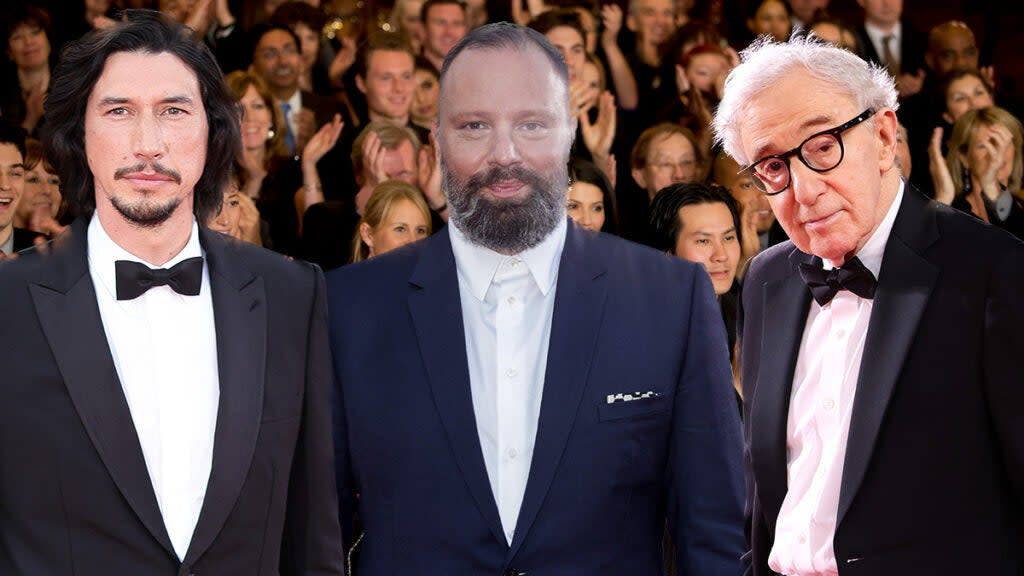Film Festival Audiences Get Up for Anything These Days. Maybe they Shouldn’t | Commentary

You are reading an exclusive WrapPRO article for free. Want to level up your entertainment career? Click here to subscribe.
Every year, filmmakers gather at festivals across the globe and compete over whose is the longest.
At the Venice Film Festival earlier this week, Bradley Cooper’s measured an impressive seven while Adam Driver’s was an average-size six. Woody Allen’s, though, was only a five and poor Roman Polanski’s was a puny three.
But hello there, Yorgos Lanthimos! The Greek director’s unfurled at a whopping 10!
Wipe that smirk off your face — we’re referring to the length in minutes of the standing ovations each of these filmmakers received after screenings of their new movies.
Ovation lengths, as anyone who’s been keeping up with the trades knows all too well, is how success and failure are gauged at the festivals these days. As measurements go, they’re not terribly significant — other than generating a few hours of fleeting buzz, they have almost zero influence over how a movie will ultimately be received by the public, by critics, or by the Academy — but at least it gives the entertainment press something to write about, especially now, while actors and writers are forbidden from doing interviews during the strikes.
“It’s pure a PR play for everybody involved,” says one veteran awards publicist who has witnessed — and participated — in countless ovations. “The studios and the distributors want the buzz for their movies, the actors want the attention, the audience and festival administrators want the tourism dollars that come with these events and the trades want headlines. But none of it is real. It’s meaningless. People at these festivals, especially in Europe, they’ll stand up for anything.”
The biggest ovations usually occur at the Cannes Film Festival, where extra-long applause interludes have been going on (and on and on) for years. Back in 2006, Guillermo del Toro received an astonishing 22-minute ovation for “Pan’s Labyrinth,” nearly a fifth of the length of the film itself. The practice has become so much a part of the event, Cannes now has cameras set up to record the reactions of the honorees (in 2021, Driver was videotaped lighting a cigarette during his ovation for “Annette” — he smoked it down to the butt by the time the audience sat back down).
More recently, though, the practice has been migrating to the other festivals, particularly Venice. Last year in Italy, Ana de Armas received a 14-minute ovation for “Blonde,” Netflix’s Marilyn Monroe biopic that ended up winning Worst Picture and Worst Screenplay at the 43rd Golden Raspberry Awards, while “The Banshees of Inisherin’s” 2022 ovation in Venice clocked in at a full 15 minutes (that movie didn’t win any Raspberrys, but it didn’t win any Oscars, either).
At times, these ovations seem entirely — and head-scratchingly — reflexive. Luc Besson, who was just cleared of rape charges in France a few months ago, received a six-minute round of applause in Venice last week after the screening of “Dogman,” a movie Variety’s critic described as “nubmskulled” and “nonsense.” Allen’s “Coup de Chance” and Polanski’s “The Palace” might be better films… but still. What do these three guys have in common?
Exactly who is standing in the back of the theater with a stopwatch? And precisely when does an ovation end — when only one person is left clapping? It’s clearly not an exact science. Did Driver get a six-minute ovation in Venice for “Ferrari” (as Variety reported) or was it closer to seven-and-a-half minutes (per Deadline)? Who knows. Who, for that matter, cares. Because with few exceptions — maybe Lanthimos’s “Poor Things,” which is getting boffo reviews for its star Emma Stone; perhaps Bradley Cooper’s “The Maestro,” which is also garnering some raves — these ovations have no correlation to the quality of the films being celebrated.
Honestly, everyone, sit down, already.
The post Film Festival Audiences Get Up for Anything These Days. Maybe they Shouldn’t | Commentary appeared first on TheWrap.


